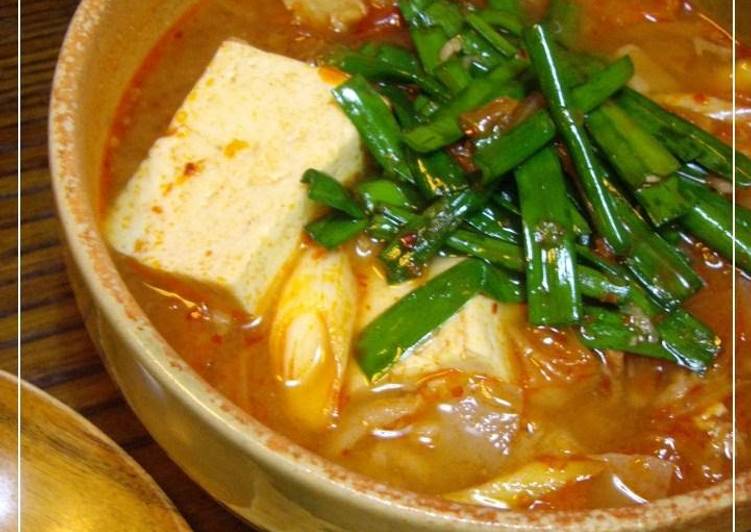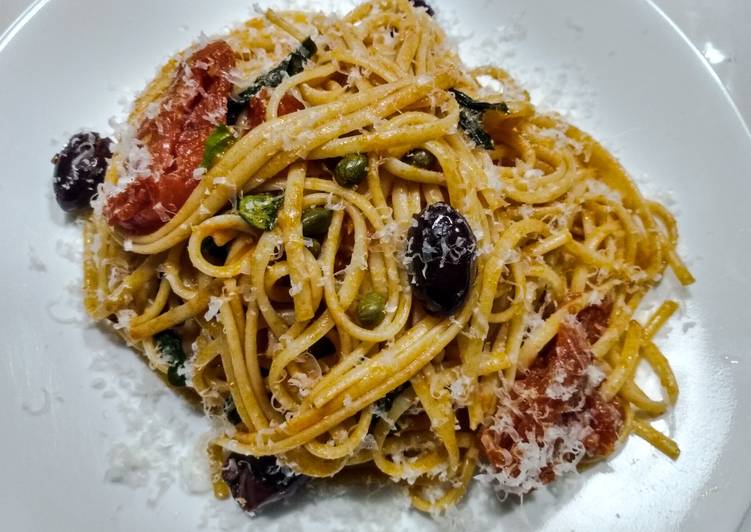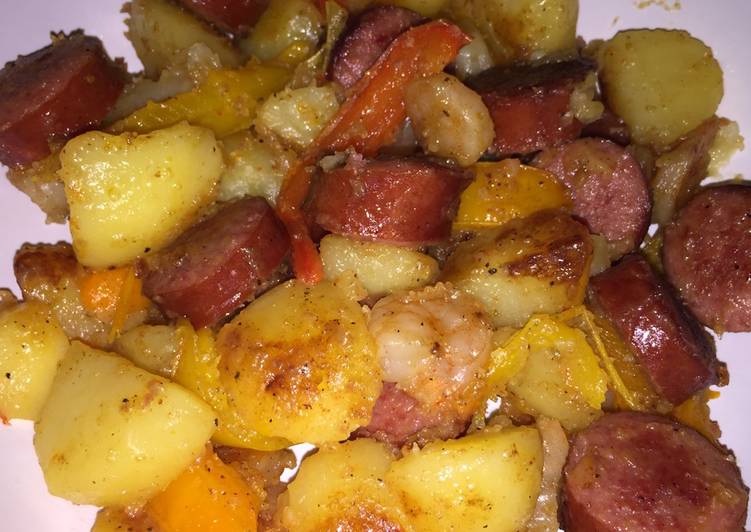
Hey everyone, hope you’re having an amazing day today. Today, I’m gonna show you how to prepare a special dish, tofu jjigae. It is one of my favorites. This time, I am going to make it a little bit tasty. This is gonna smell and look delicious.
Tofu Jjigae is one of the most favored of recent trending meals in the world. It’s appreciated by millions every day. It’s easy, it is fast, it tastes delicious. Tofu Jjigae is something which I have loved my entire life. They are fine and they look wonderful.
What is Sundubu Jjigae (Korean Spicy Soft Tofu Stew) Sundubu jjigae is a Korean stew made with soft (uncurdled) tofu as a highlight ingredient. Soondubu jjigae is a spicy Korean tofu stew made with a combination of soft tofu, vegetables, seafood, pork, or beef. It can also be topped with a raw egg and chopped scallions. The stew is cooked over direct flame until bubbling and served in the same pot (made of stone or porcelain).
To get started with this recipe, we must prepare a few components. You can cook tofu jjigae using 16 ingredients and 9 steps. Here is how you cook it.
The ingredients needed to make Tofu Jjigae:
- Make ready 150 grams Thinly sliced pork belly
- Prepare 1/2 Onion
- Get 200 grams Kimchi
- Prepare 150 grams Tofu
- Make ready 1/2 Japanese leek
- Get 1/2 bunch Chinese chives
- Make ready 800 ml Water
- Get 1 tbsp *Sesame oil
- Prepare 2/3 tsp * Grated garlic
- Get 3 tsp * Doubanjiang
- Take 2 tsp *Oyster sauce
- Take 2 tbsp ★ Beef Dashida
- Make ready 1 tsp ★ Chinese soup stock
- Get 7 to 8 shakes ★ Umami seasoning
- Get 2 tsp Miso
- Make ready 2 tsp Sesame oil to finish
This stew is savory, spicy, comforting, delicious, and easy to make, which is why it's so popular with Koreans and non-Koreans too. My husband and I are big fans of Korean cuisine, and one of our favorite dishes is sundubu jjigae. It's a Korean soft tofu stew that's a bit spicy in the most delightful way. The tofu used is a soft uncurdled form that yields the silkiest texture, and the stew has a bold red color offset by the tofu, seafood, zucchini, and enoki mushrooms.
Steps to make Tofu Jjigae:
- Cut up the pork into bite sized pieces. Put the pork into a bowl with the * ingredients and mix well.
- Cut the chives into 5 cm pieces. Slice the onion. Cut the tofu into bite sized cubes, and slice the leek diagonally.
- Heat 1 tablespoon of sesame oil in a frying pan and stir fry the pork mixture from Step 1 until the color of the meat changes.
- Add the onion and kimchi and continue stir frying until the onion is transparent. Add the ★ ingredients and stir fry for an additional 2 to 3 minutes.
- Add the water and bring to a boil. Add the tofu, skim off the scum and dissolve in the miso. Simmer for about 5 minutes.
- Add the leek and simmer briefly. Drizzle on the remaining 2 teaspoons of sesame oil. Add the chives; when they have wilted, it's done.
- The kind of kimchi that uses squid innards or fish sauce tends to be a lot tastier. Usually you'd add kimchi that has gone sour.
- This is Dashida. You can buy it online or from Korean grocery stores. The flavor just isn't right without this.
- The jjigae tastes even better the next day.
It's a Korean soft tofu stew that's a bit spicy in the most delightful way. The tofu used is a soft uncurdled form that yields the silkiest texture, and the stew has a bold red color offset by the tofu, seafood, zucchini, and enoki mushrooms. This Sundubu Jjigae (which literally translates to 'soft tofu stew') is one of my favourite Korean dishes. It has a light yet really rich and flavourful base with a kick of spice from gochugaru. Today, I'm posting another soondubu jjigae (순두부 찌개), Korean soft tofu stew.
So that’s going to wrap this up with this special food tofu jjigae recipe. Thanks so much for reading. I am sure that you will make this at home. There is gonna be more interesting food in home recipes coming up. Remember to save this page in your browser, and share it to your loved ones, friends and colleague. Thank you for reading. Go on get cooking!

